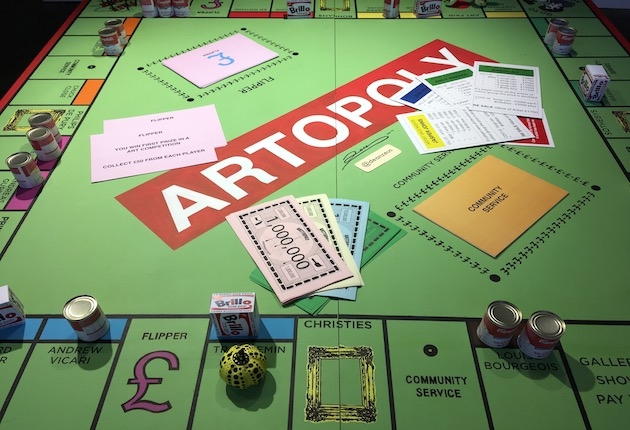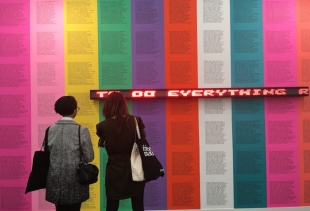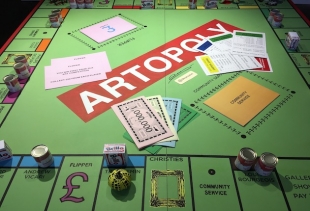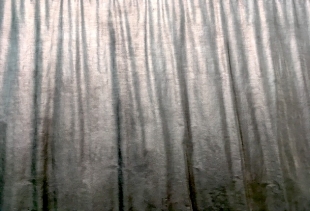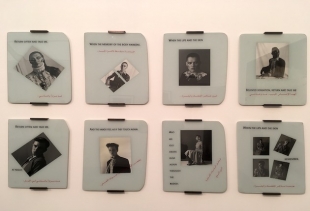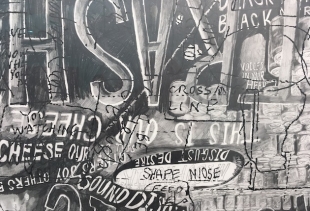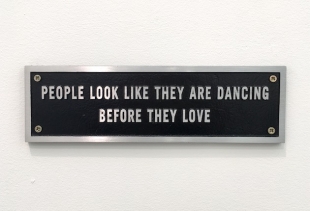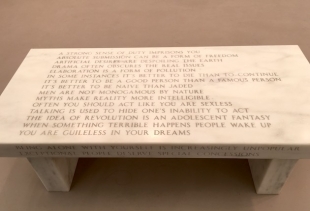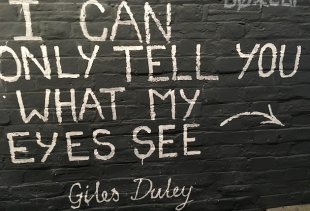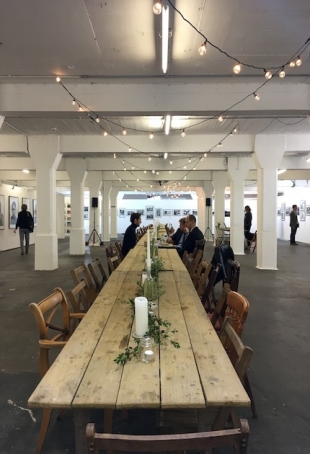» archive blog
-
Carnal, issue 0 of Parterre de Rois
A new magazine in Milandate: 18-07-2013
-
Interview with Nicola Toffolini
A worlds inventordate: 24-04-2011
-
Donne senza uomini.
Installazione multimediale di Shirin Neshatdate: 01-03-2011
Is it always a swinging London?
The contemporary art extralarge shows from Frieze to Xmas and beyond, between crisis and Brexit
Urban renewals in an unusual blue and sunny sky in the otherwise grey Britain seem to say boldly alright in a London stretched beside her Thames.
The truth, indeed, seems to be that a very important chapter of the economic wealth for this enclave (which does not stand for the entire and very rural Great Britain) is at the collapse if you watch miles away at the real estate failure around Stratford where the Olympics reversed thousand of square meters of (still empty) new offices and housing. We may ask which is the truth to The Vinyl Factory, of which we will extensively tell you in a minute.
Is this London still the swinging city we were all used to know and we were also used to envy so badly?
With its art week pulled by Frieze (the art fair with its two chapters, the very contemporary and the Masters one which will close on October 8 and whose events started on October 2 in every city corner by going further, until January sometimes), it is probable that the allure London promanates is still vibrant and positive.
It is, for instance, the same impression we got during the last Design Week and during what happens since years thanks to the ‘creative autumn’ this city got organizing thanks to the favor of its public institutions does not matter the political ‘party’ they’re expression of.
Nevertheless all this, if you watch carefully either the whole and its details, it is not working so well anymore and you start to see the creeks.
Let’s take, for instance, an exemplar paradigm seen in one of the most celebrated art installations for the citizen (the swings for three people at once placed in the Turbine Hall of the Tate Modern; it is one of the Hyundai Commissions this time signed by Danish artistic trio Superflex: One Two Three, Swing, opened on October 3rd it will close on April 2 and is on free entrance). Good idea, not well supported but very telling about the grey soul of Brittons and Britain.
A big swinging ball invited audience to lie down on a moquette (which was already filthy, we visited the show on October 5) to get ‘hypnotized’ by its movement, the same one of the Earth.
To then go to share a ride on the swings with your friends or with casual folks you meet there in order to fill the ‘3 seats’ uncanny swing.
According the artists, they are a metaphor of what it can be if in the world we could swing together in the same direction to change the planet orientation.
Very crowded by babysitters and their children and by the art goers (the friezers), these artworks were truly offering a patent example of how London can be still of everyone. But, if you get the end of the exhibit (the most important part in our view) to write down your ideas for further placements of the swings and why (the artists were requesting this), you were reaching a not tutored room, where the pins and the stickers requested to leave your thoughts were disappeared and just few pieces of paper were hung.
Luckily other institutions were elevating (even if with smaller scaled exhibits and projects) the level, also with better served commissions.
Again in years, a place to be to detect the true London pace is the Barbican Centre, where to find quality exhibits well beyond the end of the art week. Until January 7, 2018 (the show is on free entrance and close only in xmas days) the artist and British filmmaker with Ghanian origins John Akomprah (recipient of ars mundi 2017) tells another chapter (the second of five) about the way we’re suiciding ourselves by polluting - he starts exactly with the UN report on emissions.
This time the story is Purple, a six extra-size monitors plot which is sometimes very narrative against his previous experiences in films which were not linear (funny that the space in which it is placed is called The Curve and is curved).
It starts from the very far times and reaches our days either using footage and new images the director takes in the most diverse places in the world with either conventional and unconventional approaches.
The screenings - which we’ll imagine well crowded from now to go on, given the beauty of the work - are divided in five ‘movements’ plus one and all have a very evocative short title; the entire duration of the work is about 60 minutes and is preceded by two installations and pictures in tryptic which are a bit too fashionable for the style of the artist who used us to very deep reflections on humans history (as happened with Vertigo Sea his movie seen at the past Venice Art Biennale Arte, exclusively made of footage found thanks to the BBC and its infinite archive).
Akomprah (he is another artist working with Lisson, the gallery celebrates its 50th anniversary and we’ll speak of it very soon) has been also appointed artist of the year from the Frieze main sponsor, Deutsche Bank which is hosting two lounge spaces in the fair where to find conversations and parties.
The artist exhibits there some tryptic coming from very diverse sets and epochs, but also with different social and cultural backgrounds.
Before leaving Barbican, do not miss Boom For Real, dedicated to Basquiat and to the allure of that creative time in New York because you will discover that the five world top art dealers (in the fair and outside) continue to intermediate and to sell those estates (for dead artists) and those artworks of living artists coming from the end of the 80ies and from his court. Basquiat’s genres were not only graffiti but also paintings, cinema, music (in the show also his music piece in vinyl with his one off Tartow Records).
The free entrance downstairs rooms are also revealing a less known side of Basquiat the poet, the side we love more. The bookshop sells also his Notebooks.
‘I don’t know how to describe my work. It is like asking miles, how does your horn sounds’ (J.M. Basquiat).
Many galleries in the fair are running to show the very few artists on show at the Venice Biennale having some sort of sense to be collected. And of course among these very few, there is a fair spot on the Belgian Edith Dekint (also in the panel of the Frieze conversations at Regent’s Park) whose works are on show in two good galleries (the best ones seen at Carl Freedman, also among the best dealers joining the late opening at East London).
A trend can be detected (we saw it also in Basel) and is the textual artwork. Beside the editions with different media (paper as manifestos, marble, bronze) signed by Jenny Holzer there are brave dealers who alternate more ‘fashionable’ names to ones who are less: among these, there is Spruth&Magers with Kaari Upson with a very interesting graphic art with graphite on paper.
We’re introducing before something about the Lisson Gallery anniversary: it has been very celebrated by renting the space at 180 Store (in the former Strand, number 180) of The Vinyl Factory (opened on October 5, it will be on until December 10 on free entrance) with Everything at Once a gigantic show (enriched by several one nights and parties, at least in the week ending on Sunday) of all the recent artists having had a solo show in the gallery (the others are told in a limited edition book). The titles comes from a longer John Cage’s quote (he was telling it when the gallery was starting its business) and mean that we are all ‘interconnected’ just to say how 50 years ago Cage was already ‘reading’ the future.
A little digression on 180 Store: the space is endless. Former offices and malls devoured but the crisis, take for peanuts from The Vinyl Factory which is renting out a similar venue also in Soho, they’ve a nude and scratched look and are used without any minimal restoration. The real estate working really well in this London is the one renting to Fashion Weeks, to the Design Weeks (as is 180 The Store in every of these fairs).
Alongside Everything At Once, The Store X The Vinyl Factory present three site-specific commissions, including a new a/v artwork by Ryoji Ikeda, Arthur Jafa’s Kanye West-soundtracked video work Love is the Message, the Message is Death and Jeremy Shaw’s sci-fi pseudo-documentary Liminals.
The Jafa’s one is unmissable (it is on sale at Gavin Brown’s) and is placed in the roof space at the very last storey: it is the smallest space in the entire building and you must be patient to queue before to watch it.
Love is the Message, the Message is Death will glue you in for the extreme drama and the extreme sweetness mixed in the very selected and edited images which question the human limit of racial violence and the images the medias gave to us, together with a series of pre-formatted images of being Afro-American today.
Jafa just ended a very successful exhibition at Serpentine whose finissage has been colored by a jam session organized by The Vinyl Factory.
If you have not visited it yet, it is surely to book: we speak of the huge retrospective of Thomas Ruff at the Whitechapel Gallery which is either a very long digression on the history of the photography and almost all the production of the famous German artist (until January 21, 2018). With a period covering from the 70ies to nowadays, it has the merit to be a show for everyone, including those fine connoisseurs of the media and not. A show for who already knows about Ruff and want to learn more but also for those hearing first time about him and his way to use the media of photography in fine arts because is very educational. One gallery is excelling over the others: is the one showing a big series of Negatives together with the ‘Photograms’ one. This technique has been used by Man Ray to picture objects without films, just using very sensitive paper to impress their shapes on. Ruff revolutions it in a digital way.
Within a very short walk from Whitechapel, two others fairs and a show can be visited, all in all, at Old Truman Brewery where there is also the nice Sunday Upmarket…every Sunday of the year.
The Other is the Saatchi’s format showing artists without intermediation of galleries. We mean ‘showing’ also the artist with a badge on the neck, encapsulated in their micro stands. As monkeys in a cage.
Among a lot of not nice pieces, we scouted good photography there, in at least two cases (Alan Powdrill, James Tarry).
The Moniker is (if we have to caption it) the fair dedicated to street-art, to graphics and to very talented (and pushed away) mixed media included table games, fonts, and much more. It is just two doors away from The Other and is for sure the one with better surprises to be discovered. By starting with the staircase and with the first installation welcoming visitors and telling why the fair has that name and which is still the sense to be a ‘wanderer’ in arts nowadays.
There are several fairs’ commissions and solo exhibits or live acts. The galleries stand are very small and even so it is easy to loose good works because the pieces are in very different formats and techniques and sometimes they’re really small.
We loved a lot an intense, dramatic work by a very young artist, FourFingers, who declined the splatter in a decisively manneristic shape. You will find it (if you watch well) at the Curious Duke Gallery (this gallery started to trade four years ago as a pop-up store: it was founded and financed by a very young, just 23 years old at that time, former textile designer, Eleni Duke).
The work consists of small frames enclosing a resined thick surface. Inside, there are small bones of very small mice all dressed in golden leaf.
The artist sources the mice’s bones in the pallets, where their predators spit them after having chewed their flesh. He cleans the bones, seals them in golden leaf to make them durable and then plunge them in resins. The effect is priceless, the price is very affordable.
In both the fairs, and in some other galleries, it’s possible to buy art with the program My Own Art for every single purchase: financed by National Lottery and by the Arts Council it allows customers with no great wealth to buy artworks and to pay them in 10 months, with 1/10 of their value per month.
A storey below Moniker, there is a photo exhibition and much more (it is above all a keen meeting point) organized with UNHRC, the United Nation Committee on Refugees. I Can only Tell you what my Eyes See by Giles Duley.
The exhibit (until October 15) is first of all a stunning space to know more and to share: there is a very long table decorated with herbs and candles which is opposite to the extensive journey undertaken via the Duley’s pictures taken in more than 15 countries witnessing bodies and stories of forced displacement.
The same-title book (in different editions, starting from some priced 15 pounds) is a story in texts and pictures documenting a very cultured anthropological journey before to be just a photographic collection.
The show ends to be a ‘supper club’ in the evenings (the table, so, is always used). It hosts also painters and artists in residences, including also a writer. With a special soundtrack created by Robert del Naja (Massive Attack) it is complemented by a series of paintings made by Syrian children who have been into psychological counseling through arts. All the funds obtained by selling any artwork, food or other on show and of course the books are donated to a charity active to support Middle East victims of wars (the exhibit is on free entrance).
If you’re on the idea to scout other exhibits working on the idea of audience interactions and charitable aims (or if you’re scholarly interested to participative art - or if you want to watch who creates by donating, buying, promoting) there is another place to browse (until October 22).
It is a pop-up charity store invented and designed (as it could be a set prop of her stunning movies) by Miranda July (a famous Californian artist, director and writer who was also signing short movies for Miu Miu at the Venice Movie Festival)
Produced by Artangel and located on the third level at Selfridges (the biggest and more English mall) the artwork has the shape of a charity shop and work exactly as you can imagine. Moreover, it is realized with the cooperation of four charities (one is Buddhist, one is Islamic, one is Christian, one is Jewish).
You can make incredible bargains there: re-warmed up within the Frieze program (the shop opened early this September), the artist spoke in public on October 5 (while she was signing many copies of her latest novels) telling which were the reasons behind her work of art and why in a way Selfridges was the last attempt to make a work after her residency at Artangel (other projects were not finding a favor to be realized in London in terms of partnerships).
The charity is very small and packed of things (sources for anyone: babies, women, men): you can find Fendi sunglasses for 2 pounds, really nice party dresses at less than 7…or design pieces at 20 pound (we’ve been kissed by good luck and bought the entire series of Bronze plates and bowls by Tom Dixon for …40 pounds; it would have been costed 400 pounds for less pieces)
The artist in this case deconsecrated one of the most ‘Brit’ institutions, the charity shops, by forging it to very strictly socio-politic themes. By also insisting on the ‘discarded’ which can be valued: from the consumerism to the creation of a chain of social value. The experiment really succeeded. Beside to donate garments or other items or small and big sums to the involved charities, it is stunning also to be there for a little while. The shop smells very good, oppositely to what happens in other charities….and is totally curated in the items on sale.
Its shopping bag is less yellowish of the typical, iconic Selfridges shopping bags; the logo on the price tags is resembling the UN one, and even its blue is identical.
Once again, the devouring humor characterizing Miranda July’s work strikes!
While we’re writing this report while coming back from Stanstead Airport, we listen to the very trendy online London radio called NTS, we’ve been suggested from a dear friend who is a music giant. This is still making London swinging.
Before leaving for London, take a look on the party listing it is promoting (they can be surprisingly good).

